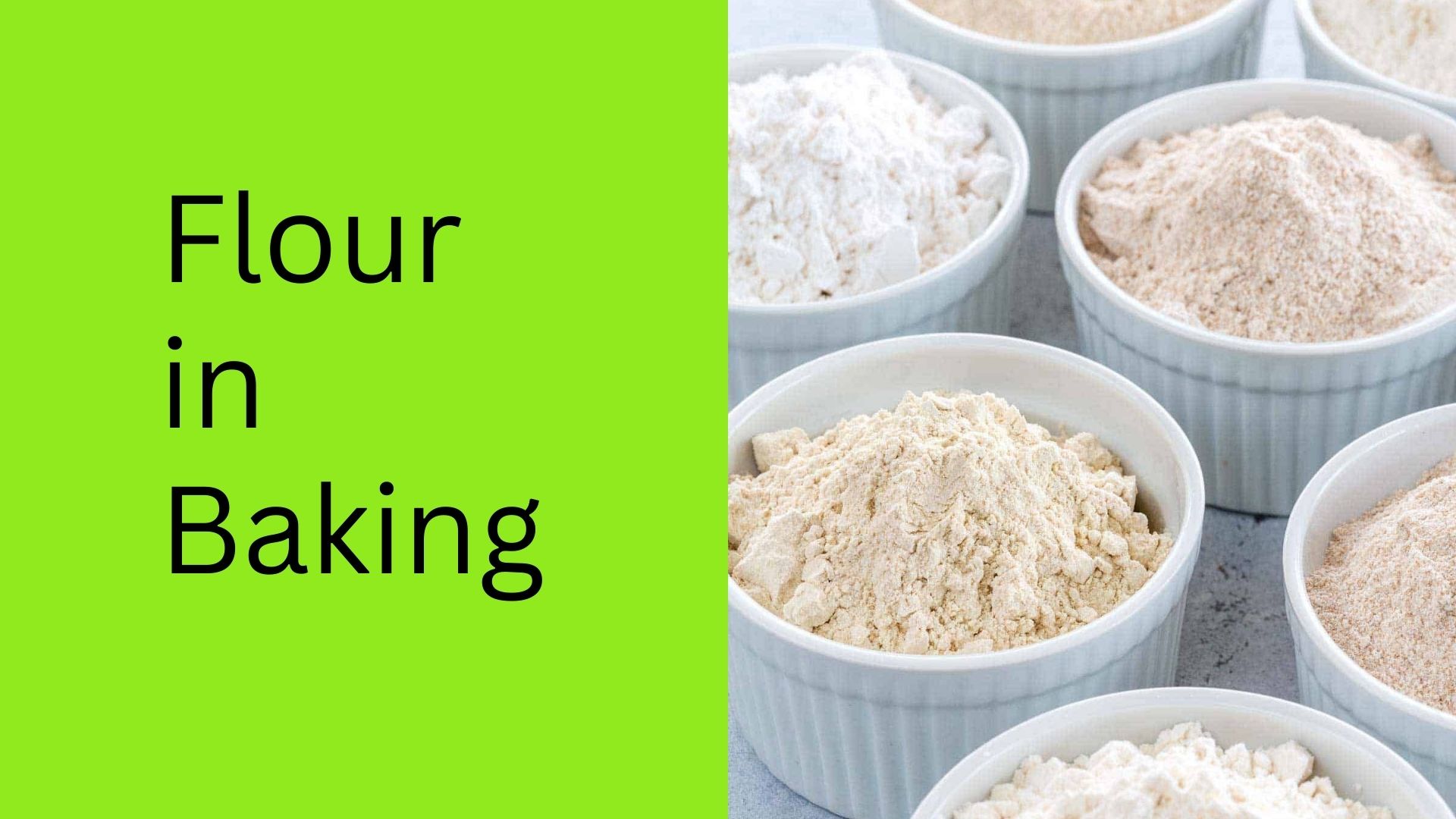Discover the art of baking beyond traditional flour! In this culinary journey, we’ll explore five fantastic substitutes that can transform your baked goods while preserving their scrumptiousness. These alternatives offer exciting avenues for flavor, texture, and dietary creativity, so let’s dive in and discover the world of substitute flours.
Purpose of Flour in Baking:
Before we unveil the substitutes, let’s understand the significance of flour in baking:
- Foundation of Structure: Flour forms the base structure of baked goods, giving them shape and stability.
- Diverse Textures: Different flours lead to varying textures, from delicate cakes to hearty breads.
- Binding Agent: Flour acts as a binder, holding ingredients together to create cohesive dough and batter.
- Leavening Support: Flour can contain gluten, aiding in dough rise and creating light, airy pastries.
- Flavor Absorption: Flour absorbs liquids and flavors, enhancing taste and aroma in baked treats.
Why Replace Flour in Baking?
Let’s explore motivations for embracing these flour substitutes:
- Dietary Diversity: Substitutes cater to gluten-free, paleo, and low-carb diets.
- Nutritional Enhancement: Alternative flours offer higher protein, fiber, and nutrient content.
- Flavor Exploration: Unique flours introduce novel taste profiles, enriching your baking repertoire.
- Texture Innovation: Substitutes provide opportunities for experimenting with new textures in recipes.
- Culinary Adventure: Trying different flours fosters culinary creativity and a deeper connection with ingredients.
Substitutes and Explanations:
- Almond Flour – A Nutty Delight
Almond flour, finely ground from almonds, offers a nutritious twist. It brings moisture and a delightful nuttiness to your baked goods, making it a staple in gluten-free baking.
Nutrient Per 1/4 cup (28g) Calories 160 Total Fats 14g Proteins 6g Carbohydrates 6g How it’s Made: Almond flour is produced by finely grinding blanched almonds. Its rich flavor and moist texture make it an excellent choice.
- Coconut Flour – Nature’s Fibrous Touch
Coconut flour, crafted from dried coconut meat, is a gluten-free option packed with fiber. It’s renowned for its moisture-absorbing abilities and imparts a delicate coconut flavor.
Nutrient Per 1/4 cup (30g) Calories 120 Total Fats 4.5g Proteins 4g Carbohydrates 16g How it’s Made: Coconut flour is produced by drying and finely grinding coconut meat. Its unique texture and flavor add an exotic touch to recipes.
- Oat Flour – Wholesome Goodness
Oat flour, ground from oats, is a versatile gluten-free option. Its hearty texture and subtle taste make it a favorite for various baking endeavors.
Nutrient Per 1/4 cup (30g) Calories 120 Total Fats 2.5g Proteins 4g Carbohydrates 22g How it’s Made: Oat flour is created by grinding rolled oats. Its earthy flavor and nutritional value make it a popular choice for health-conscious bakers.
- Banana – A Natural Sweetener
Mashed ripe bananas, an unconventional choice, bring natural sweetness and moisture to recipes. They’re an excellent addition to your baking arsenal.
Nutrient Per 1 medium banana Calories 105 Total Fats 0.4g Proteins 1.3g Carbohydrates 27g How to Use: Mashed bananas replace flour in recipes like pancakes and muffins, offering natural sweetness and binding properties.
- Chickpea Flour – A Nutrient-Rich Alternative
Chickpea flour, also known as gram flour, is a gluten-free and protein-rich option. Its nutty flavor and versatility make it a favorite among health-conscious bakers.
Nutrient Per 1/4 cup (28g) Calories 100 Total Fats 2.5g Proteins 5g Carbohydrates 16g How it’s Made: Chickpea flour is produced by grinding dried chickpeas. Roasting the chickpeas before grinding enhances their nutty flavor.
Nutrition Facts Summary Table:
| Substitute | Calories | Total Fats | Proteins | Carbohydrates | Works Best In |
|---|---|---|---|---|---|
| Almond Flour | 160 | 14g | 6g | 6g | Gluten-free baked goods |
| Coconut Flour | 120 | 4.5g | 4g | 16g | Moist and dense baked goods |
| Oat Flour | 120 | 2.5g | 4g | 22g | Hearty baked goods like muffins |
| Banana | 105 | 0.4g | 1.3g | 27g | Quick breads and pancakes |
| Chickpea Flour | 100 | 2.5g | 5g | 16g | Savory and protein-rich baked goods |
FAQs:
Q1: Can almond flour be used as a 1:1 substitute for all-purpose flour?
A: Almond flour has different properties, so adjustments are needed in recipes.
Q2: How does coconut flour impact moisture in baked goods?
A: Coconut flour is highly absorbent, requiring more liquid than other flours in recipes.
Q3: Is oat flour gluten-free?
A: Yes, oat flour is a gluten-free option suitable for various baking needs.
Q4: What can mashed bananas replace in baking?
A: Mashed bananas work well in recipes like pancakes, offering natural sweetness and moisture.
Q5: Can chickpea flour be used for sweet and savory baking?
A: Certainly, chickpea flour’s nutty taste makes it versatile for both types of recipes.
Conclusion:
As we conclude our journey into the world of flour substitutes, remember that baking is an art that thrives on exploration and innovation. These five substitutes – almond flour, coconut flour, oat flour, mashed bananas, and chickpea flour – open the door to exciting new possibilities. From enriching nutritional profiles to adding unique flavors, these alternatives invite you to craft culinary creations that stand out. Embrace the joy of baking as you experiment with these substitutes and embark on a flavorful and creative adventure!




